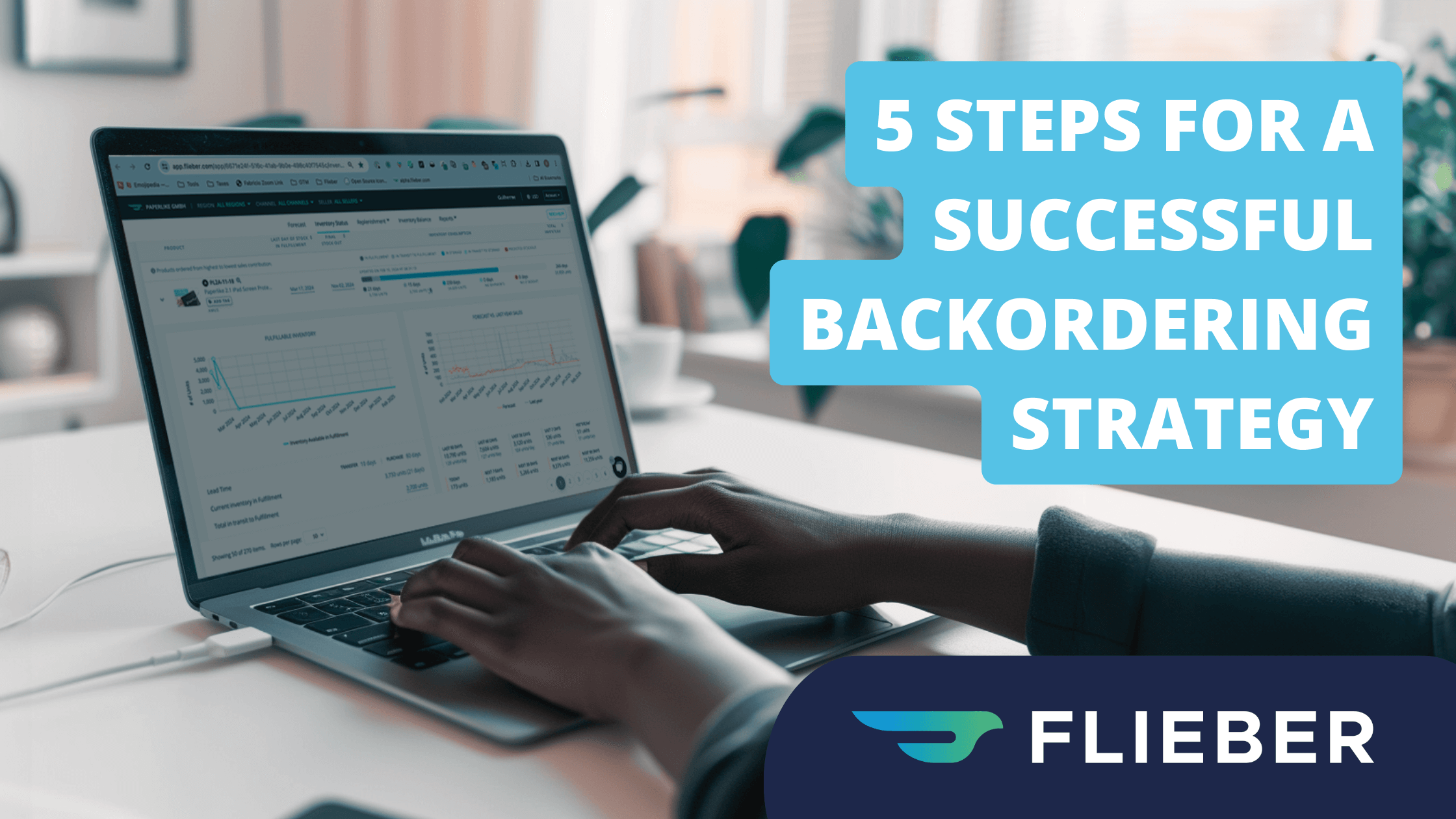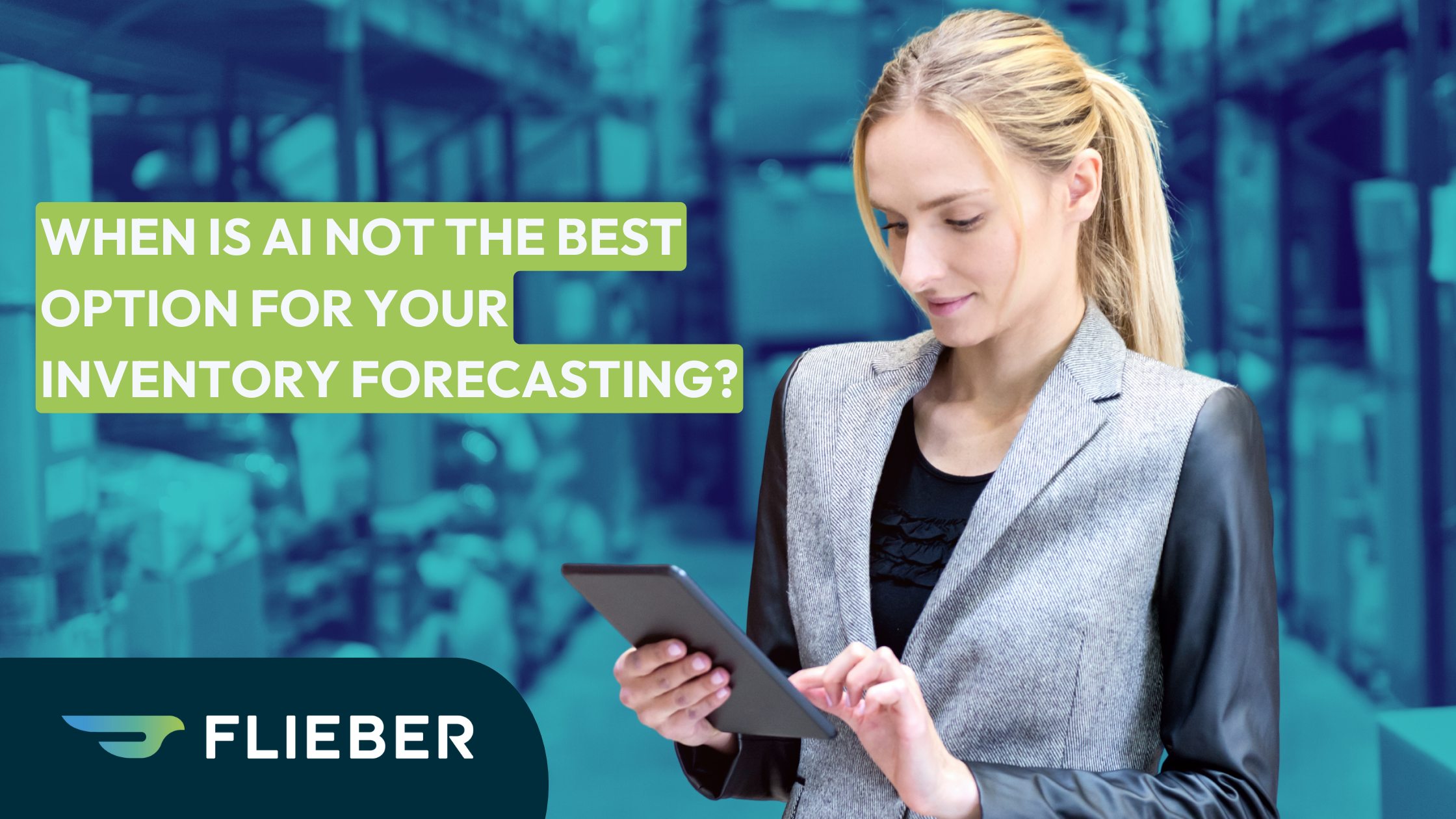For certain retailers, the publicity you can garner when a viral product is low in stock is more precious than gold. But for most, not having enough inventory has the opposite effect.
Lost sales and increased inventory costs are just some of the risks involved with putting e-commerce products on backorder. But what many retailers don’t realize is that it is possible to get the best of backordering, using it to increase sales while maintaining inventory control.
In this guide, we'll reveal the benefits of backordering in the current e-commerce climate and share practical tips to grow your revenue.
Table of contents
- What is backordering?
- The benefits of a backordering strategy
- How to plan a profitable backordering strategy
What is backordering?
At its most basic, backordering is a strategy that allows an e-commerce business to sell a product that's currently not in stock, but that will be available at a later date. When consumers place an order for an item that's on backorder, they're essentially purchasing the product in advance, with the understanding that it will be shipped as soon as it arrives in your inventory.
How backordering works
Backordering is commonly used when a product is in high demand or when availability is unpredictable, for example due to ongoing supply chain issues or a lack of available storage space.
When a backorder is placed, the customer makes the purchase as usual. The retailer may have already issued a purchase order to replenish the inventory or they may wait until they reach a certain number of backorders.
Once the out-of-stock product becomes available, it's promptly shipped to the customer. The timeframe for this can vary, ranging from a few days to several weeks depending on the nature of the product and the turnaround time of your suppliers.
Backordering vs. pre-ordering
In backordering, the product has already been in the market, but is temporarily unavailable due to high demand or an insufficient amount of stock. This differs from pre-ordering, where a product is yet to be launched.
Since the product has already been in the market, customers generally expect faster delivery on backorders. Customers who pre-order are usually aware of the wait that accompanies a product launch and therefore tend to be more patient.
However, in e-commerce there are always exceptions. If you sell items with a high product value or viral products with extremely high demand, customers may be willing to wait longer for their backorders.
The benefits of a well-structured backordering strategy
A carefully designed backordering strategy can help you drive customer loyalty, build anticipation for new and existing products, and scale your e-commerce revenue.
Here are some of the core benefits an effective backorder process can deliver:
- More revenue: With an efficient backordering process in place, you can capture sales that would have otherwise been lost to stockouts. Instead of clicking off your website and turning to a competitor, customers place their order and remain with your brand.
- Optimize peak season sales: Backorders provide a safety net to handle both planned and unexpected sales rushes. During seasons of high demand, you can accept orders beyond your present stock levels, knowing that you’ll fulfill them as soon as replenishments arrive.
- Upselling opportunities: Retailers can use backorders as an additional opportunity to upsell or cross-sell. Personalized product recommendations can suggest a higher priced in-stock alternative or encourage shoppers to add complementary products at checkout. In short, backordering can increase your AOV, where you might have otherwise lost the sale entirely.
- Stronger brand loyalty: Backordering gives you new opportunities to connect with your audience. Reaching out to update customers on the status of their backorders means frequent interactions and more opportunities to foster a deeper connection.
- Avoid overstocking and understocking: Backordering allows you to operate with leaner inventory, reducing the risk of overstocking or understocking. During quieter periods, you can avoid the high costs of unsold inventory while capitalizing on any surges in demand.
- Stronger cash flow: With a well-executed backordering strategy, you no longer miss out on sales and you’re not locking all your capital into excess inventory. You can reduce replenishment frequencies, adjust reorder points and carry less safety stock, freeing up additional resources to invest in your business.
Finally, a strong backordering process can be a key differentiator in a crowded e-commerce landscape. If you can promise and deliver on the customer’s demand, you can strengthen your market position while your competitors remain out of stock.
How to plan a profitable backordering strategy
Backordering can have a positive effect on your sales, but it’s not without its risks.
In this section, we’ll take an even-handed look at the many ways backordering can impact your business and share clear steps to help you build a profitable strategy.
1. Measure the total impact on your P&L
The most immediate benefit of a backordering strategy is of course, increased sales.
Even with a process to notify customers when a product is back in stock, a lot can happen between the moment a customer wants to purchase your product and the time you finally receive the missing inventory. The customer may find the same or similar product from a competitor, decide they don’t need the item after all, or forget they wanted it all together.
When you offer customers the option to place items on backorder, your sales are no longer dependent on your immediate stock levels.
However, it’s important to note that these sales do come at a cost. Research shows that backordering can cost $15 to $20 per order, due to increased fulfillment, shipping and packing costs.
At a time when 37% of e-commerce businesses aren’t meeting their profitability targets, it’s important to carefully measure the full impact of backordering on your bottom line.
Action steps:
![]() Forecast the amount of sales that could be gained through backordering.
Forecast the amount of sales that could be gained through backordering.![]() Analyze potential cost increases due to additional steps in your order fulfillment process.
Analyze potential cost increases due to additional steps in your order fulfillment process.
2. Improve your forecasting and inventory management
Live order status updates are fast becoming the rule, rather than the exception. According to research, 66% of consumers say delivery update notifications are the most important factor after completing an online purchase.
As the bar for customer satisfaction continues to rise, the tide in e-commerce is always shifting.
Amazon recently announced that it will now offer shoppers the ability to track Buy with Prime orders in real-time. Meanwhile, a growing number of consumers say they’d actually rather have free shipping than fast shipping.
The key is to maintain transparency with clear and accurate delivery estimates at every step of the customer journey.
To launch an effective backordering strategy, you’ll need a proven process for forecasting your lead times to help provide the customer with accurate shipping estimates.
Action steps:
![]() Test your forecasting processes to pinpoint your most accurate and effective models.
Test your forecasting processes to pinpoint your most accurate and effective models.![]() Prepare your website to automatically place out-of-stock items on backorder.
Prepare your website to automatically place out-of-stock items on backorder.![]() Offer live order tracking on all backordered items.
Offer live order tracking on all backordered items.![]() Use your data to refine your forecasts, avoid overstocking and reduce carrying costs.
Use your data to refine your forecasts, avoid overstocking and reduce carrying costs.
3. Audit your suppliers and 3PLs
By offering products on backorder, you reduce your holding costs while also reducing your reliance on your current inventory levels. However, some of that burden shifts directly onto the manufacturers and suppliers who create your products.
This can result in what’s known as the “bullwhip effect,” where changes in demand at the end of a supply chain lead to inventory fluctuations throughout the entire chain.
While effective demand forecasting can help mitigate the bullwhip effect, implementing a backorder system means you’ll inevitably be dealing with suppliers much more frequently, often in higher pressure situations.
Depending on the scope and volume of your backordered products, this may mean expanding your supplier base to include partners in regions with fewer labor shortages. You’ll always want to make sure your 3PL also has a proven track record of shipping backorders, including a process for prioritizing which backorders get fulfilled first when stock is limited or comes in batches.
Action steps:
![]() Make sure suppliers have systems in place for obtaining raw materials, staying on production schedules and moving through your order backlog without orders getting lost or delayed.
Make sure suppliers have systems in place for obtaining raw materials, staying on production schedules and moving through your order backlog without orders getting lost or delayed.![]() Ask your 3PLs to share their processes for rapid restocking, order prioritization and transparent communication with customers.
Ask your 3PLs to share their processes for rapid restocking, order prioritization and transparent communication with customers.![]() Invest in an inventory management system that includes complete end-to-end supply chain visibility.
Invest in an inventory management system that includes complete end-to-end supply chain visibility.
4. Prepare your customer service team
No matter how clear your product page copy and email communication, your customer service team will likely see an increase in inquiries related to backorder purchases. And if your delivery date estimates aren’t accurate, you could also see increased complaints and cancellations.
To maintain a strong customer experience for backordered products, always let the customer know when their order has left the supplier and is on its way to your warehouse, or when it’s ready to ship.
Once the item leaves your facilities, provide precise last mile order tracking, with an option to communicate directly with delivery drivers.
And always prepare your team with a clear plan of action to help keep customers happy.
For example, if a customer decides a backorder is taking too long, be prepared to offer personalized alternatives so they can update, rather than cancel, their order. When necessary, consider sale-saving tactics, like offering a similar product at a discount.
Action steps:
![]() Make sure backordered products are clearly labeled on the product page, with attention-grabbing fonts, colors and estimated wait times.
Make sure backordered products are clearly labeled on the product page, with attention-grabbing fonts, colors and estimated wait times.![]() Provide a more specific delivery estimate at the checkout page, before the customer completes their purchase.
Provide a more specific delivery estimate at the checkout page, before the customer completes their purchase.![]() Send regular updates and email notifications with the customer’s order status and location.
Send regular updates and email notifications with the customer’s order status and location.![]() Provide a phone number or live chat link and prepare your team to offer support in real-time via these channels.
Provide a phone number or live chat link and prepare your team to offer support in real-time via these channels.![]() Put mechanisms in place for handling customers who express dissatisfaction to avoid order cancellations.
Put mechanisms in place for handling customers who express dissatisfaction to avoid order cancellations.
5. Use your data to refine your strategy
A strong backordering strategy can tell you a lot about the demand for your products.
Study your data to find out what customers want, break down your margins on backordered products, and strike a profitable balance between your sales and inventory levels.
The goal is to always know the amount of inventory you have in stock, where it’s located and above all, why it’s there. With a clear plan for maximizing profits at both the product and portfolio level, you can make the best possible decisions for your business.
Action steps:
![]() Centralize your sales data to accurately predict demand across multiple channels.
Centralize your sales data to accurately predict demand across multiple channels.![]() Use a customizable sales forecasting and inventory planning solution to track each of your SKUs across each of your channels.
Use a customizable sales forecasting and inventory planning solution to track each of your SKUs across each of your channels.![]() Put mechanisms in place for handling customers who express dissatisfaction to avoid order cancellations.
Put mechanisms in place for handling customers who express dissatisfaction to avoid order cancellations.
Grow your revenue through backordering
Like so many other forms of revenue expansion, backordering can be an extremely successful strategy for increasing sales. But it also comes with a big responsibility: you have to deliver on your promise to the customer.
To win with backordering, keep a balanced perspective on both the benefits and drawbacks so you can create a process that works for your business, not against it.
When you’re ready to reach for the next level, Flieber can help.
With subscription- and wholesale-specific demand forecasting, backorder management, LTV analysis and the ability to visualize future inventory availability by revenue model, you'll have all the insights you need to propel past your next milestone.
Get started for free and access full sales and forecast visibility down to the SKU level in a matter of hours.




